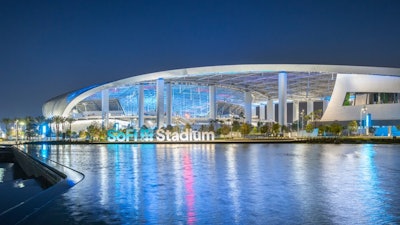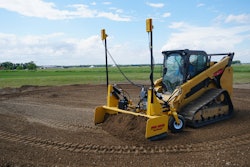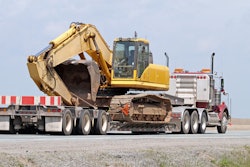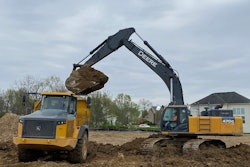
It took nearly four years to build the NFL’s largest indoor/outdoor venue under a single roof.
Construction of SoFi Stadium in Inglewood, California, began in November 2016. The 3.1 million-square-foot facility, which is the first football stadium erected in Los Angeles in nearly a century, finally opened in September 2020.
(Check out the 3-minute time-lapse video of the stadium's four years of construction at the end of this article.)
The stadium can host approximately 70,000 fans for the home NFL games played by the Los Angeles Chargers and Los Angeles Rams and is expandable to accommodate up to 100,000 people for special events.
It is the highlight of the 298-acre Hollywood Park entertainment complex and development. The canopy style roof structure that covers the stadium, also loops over the 2.5-acre outdoor American Airlines Plaza and the 6,000-seat YouTube Theater music and theater venue.
Most recently, SoFi Stadium hosted Super Bowl LVI, where the Rams defeated the Cincinnati Bengals 23-20. Based on fan reaction, while the game was exciting on its own merits, the stadium itself definitely was a topic of discussion before, during and after the game.
The award-winning design was by HKS Inc. Construction was a joint venture between Turner Construction and AECOM Hunt, which oversaw a team of 3,000 workers daily at peak, with more than 17,000 people in total contributing to make the NFL’s largest stadium a reality.
 The centerpiece of SoFi Stadium is a double-sided video board that sits 120 feet above the field and contains panels as tall as forty feet.Rich Fury
The centerpiece of SoFi Stadium is a double-sided video board that sits 120 feet above the field and contains panels as tall as forty feet.Rich Fury
Built on the former site of the Hollywood Park Racetrack and just south of the Los Angeles Forum, the $5.5 billion project was impeded by height regulations set by the Federal Aviation Association due to the stadium’s proximity to the Los Angeles International Airport, which is only 3 miles away. In addition, builders also faced structural considerations due to potential earthquakes in the area near a fault line.
To meet the demands of such a large capacity stadium while also reducing the height, the bowl was built deeper into the ground. This included excavating more than 7 million cubic yards of dirt to build the field level at 100 feet below grade. Unlike most stadiums where you ascend to your seat or even enter at field level, at SoFi, ground level is the sixth floor.
As for earthquakes, a retaining wall was installed along the outside of the stadium bowl, allowing for seismic isolation, a method of protecting a building from major earthquakes by installing isolators and energy-absorbing devices under the superstructure.
Overall, the stadium is a technological marvel. The centerpiece is the double-sided video board 120 feet above the field with panels as tall as 40 feet. The video board is the largest in the league, longer and wider than the playing field, and weighs 2.2 million pounds. Simply raising the video board was a feat.
Another signature feature of the stadium is the opened-ended, semi-translucent, 1 million-square-foot roof, which helps define the facility as the only open-air, indoor-outdoor facility in the NFL. However, due to the indoor-outdoor aspect, parts of the stadium are susceptible to wind, rain and lightning, so weather delays can still occur.
Overall, the design of the roof enables the sun to shine inside the stadium and breezes to be felt from the ocean 5 miles away. While the height of the facility met the FAA guidelines, the contractors had to get approval for using some of the cranes for the project due to their height.The roof structure is the biggest of its kind and is composed of 35,000 unique panels. It contains 17 miles of cable and weighs 500 million pounds.
SoFi Stadium is slated to host a variety of events including the College Football Championship Game in 2023 and the Opening and Closing Ceremonies of the Olympic Games in 2028.
Quick specs
- 3.1 million square feet
- 7 million cubic yards of dirt removed
- 144,000 cubic yards of concrete poured
- 18 miles of cable installed
- 13 miles of plumbing pipe installed
- 3,000 construction workers on site daily
- 17,000 workers total
- 12 million worker hours logged
- 23 elevators, 50 escalators and 2,638 doors
- 70,000 seats, expandable to 100,000 for major events
Check out this 4K time-lapse video from EarthCam of the construction of SoFi Stadium. The 3-minute video took over 1,400 days and four million images to document the construction of the stadium and show off some of its unique features.














